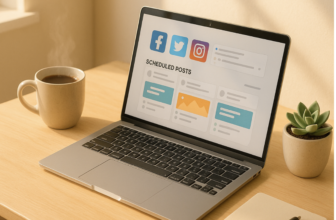In 2025, the workplace landscape is rapidly evolving due to the increasing integration of artificial intelligence (AI). AI refers to computers and machines designed to think and learn like humans. While people once performed all job tasks, many companies now rely on AI to complete tasks faster and sometimes more efficiently. This article explores which companies are leading the charge in replacing workers with AI and what these changes mean for everyone.
Contextual Background
AI technologies have advanced significantly over recent years, becoming smarter and more widespread. Machines now perform jobs previously requiring human cognition, such as answering questions or assembling products. Companies favor AI for several reasons:
- Cost savings: AI enables companies to reduce labor expenses.
- Speed and efficiency: Machines can work continuously without breaks.
- Accuracy: AI makes fewer errors compared to humans.
For example, an AI system can quickly process thousands of customer inquiries without fatigue—something a human worker cannot sustain.
Companies Leading the AI Replacement Trend
Several major companies have publicly announced workforce reductions influenced by AI adoption:
- Amazon: Uses AI in their warehouses to sort packages and handle some administrative tasks in their offices. They’ve cut around 14,000 corporate jobs due to AI automation. Learn more from Reuters.
- IBM: Replaced about 200 human resources jobs with AI agents that automate hiring and employee query management.
- UPS: Employs AI to optimize package sorting and delivery route planning, reducing manual labor needs.
- Alphabet (Google’s parent company) and Fiverr: Use AI to handle customer support queries and task management, affecting workforce size.
Types of Jobs Replaced by AI
The primary roles affected by AI include:
- Manufacturing and assembly line jobs: Machines can produce goods faster than humans.
- Customer service: AI chatbots answer customer questions 24/7, reducing call center workers.
- Data processing and administrative tasks: AI handles spreadsheets, reports, and data analysis swiftly and without mistakes.
- Finance and retail sectors: Beginning to implement AI-driven processes to streamline operations.
Impact on the Economy and Workforce
By 2026, studies estimate around 37% of companies plan to replace workers with AI technologies. This shift is leading to significant changes in employment landscapes, including job losses. Despite savings and productivity gains for companies, there are growing concerns over the fate of displaced workers.
Many organizations and governments are responding with retraining programs to equip employees with skills for working alongside AI or pursuing new careers.
Ethical and Social Considerations
Transparency is vital. Companies should clearly communicate with employees about AI adoption and job security. Society must consider the broad implications of job displacement, including:
- Providing income support for affected workers.
- Creating new job opportunities that combine human and AI strengths.
- Fostering policies that support a fair transition.
Future Outlook
Looking ahead, AI’s impact will likely continue to evolve work environments. Rather than solely replacing jobs, AI could augment human effort, helping people perform tasks better or handle repetitive and complex jobs.
The most successful workplaces will likely be those where humans and AI collaborate, leveraging each other’s unique strengths.
Conclusion
In summary, companies such as Amazon, IBM, and UPS are prominently using AI to replace certain human roles. Manufacturing, customer service, and administrative jobs are most affected, resulting in both challenges and opportunities for workers and the wider economy.
It is essential for businesses, employees, and policymakers to collaborate in managing these changes constructively so everyone can benefit from the evolving AI landscape.
For more insights on automation and business strategies, check out this market intelligence software article.
Also, for the latest news on AI-related workforce changes, visit this HR Dive article.



